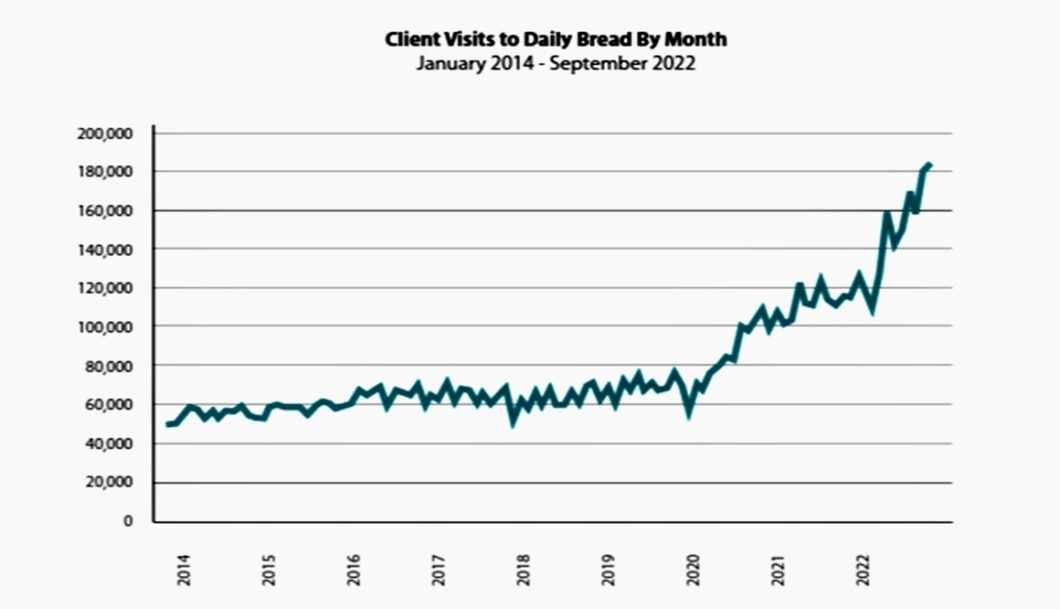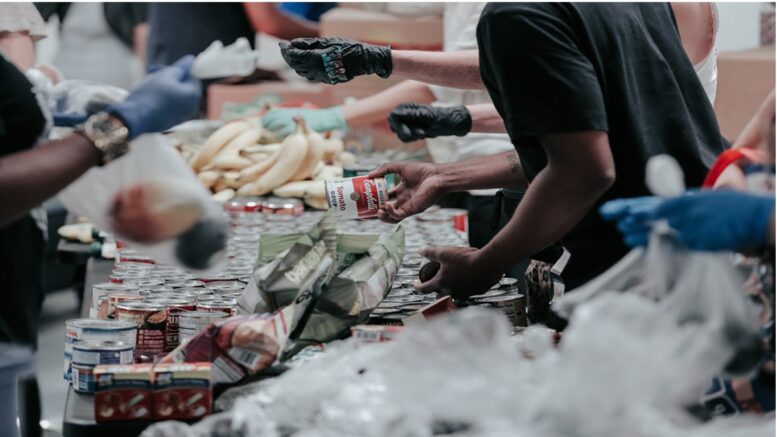Food banks in Toronto are calling on the government to make an immediate change after the number of people accessing them monthly has reached its highest.
“Around COVID we would get around 300 families a week … but nowadays because of inflation and the prices, the number has doubled, so now I guess I’m serving 700-plus every two days,” said Chadi Abed operation manager at Flemingdon Food Bank.
Flemingdon Food Bank. near Don Mills Road and Overlea Boulevard, is one of the many organizations that has seen a significant increase in the number of clients who need to use food banks over the last few years.
“I have food on Monday when I get a shipment and my shelves are not a hundred percent full but I can survive. Wednesday, you can say the shelves are mostly clean and empty,” Abed said.
Many people accessing the food banks are also new to Canada and depend on these services, he said.
“There are a lot of newcomers in the area and they rely on government assistance and food banks. They are barely surviving,” Abed said.
Newcomers choose to live in Flemingdon Park because the neighbourhood is multicultural, which makes it easier for them to adapt too, since they can associate with people who have a similar culture to them, according to Abed.
Over 20,000 people live in the neighbourhood, according to AreaVibes, while a Flemingdon Park Public Library study showed that over 80 languages are spoken within the community.
Abed said the government emailed him in 2019 to check in when COVID started. He explained the situation at the food bank but has not received much assistance from them due to being a non-profit organization that partners with the Daily Bread Food Bank and Second Harvest.
“Wages need to be addressed because if people can afford to buy food you won’t see these numbers increase,” he said.
‘The number of clients per month has quadrupled’
The Daily Bread Food Bank and its network of 128 member agencies are calling on the Government of Ontario to address the growing food insecurity crisis immediately.
“To help reduce food bank line ups, we requested that the Government of Ontario reinstate the emergency top-up that was in place during the outbreak of the pandemic ($100 for individuals and $200 for families on social assistance),” writes Neil Hetherington, CEO of The Daily Bread Food Bank. “This, combined with the federal “grocery rebate” GST credit would almost get those on fixed incomes back to the place they were before the food inflation crisis.”
Government officials advised that they cannot support this request due to budgetary constraints and the actions they have already taken to address this crisis.
Before the pandemic, 65,000 clients were going to food banks every month, said Hetherington in a press conference on April 4.
In March, the Daily Bread Food Bank had 270,000 client visits, making it the highest number of visits they have ever recorded.
“We are in a crisis. The Daily Bread Food Bank and food banks all across the city are at a breaking point and there is no sign of relief,” Hetherington said.
In previous years, The Daily Bread Food Bank used to spend around $1.5 million on food every year, but now they are spending around $1.8 million every month, according to Hetherington.
The Daily Bread Food Bank said that over 12,000 new individuals are going to the food bank each month, which is six times greater than before the pandemic.
The Stop Community Food Centre has also seen a significant increase in the number of people accessing its services.
“We’ve seen a 52 per cent increase in new food bank memberships, so, people who’ve never used our food bank before,” said Marie-France Roche, development manager at The Stop. “We’re also seeing a 48 per cent increase in the number of households accessing.”
A lot of people they see are also newcomers to Canada who do not have the resources or support they need to live a dignified life, she said.
‘People are skipping meals’
In June 2022, one in five Canadians, which is 20 per cent, reported that they were likely to get food from community organizations within the next six months because of rising costs, according to Statistics Canada.

By the end of 2022, the number of people who visited food banks was expected to be over 2 million, according to the Daily Bread Food Bank’s Who’s Hungry 2022 report. Eighty-one per cent of the responders said they did not have enough food or the kind of food they wanted, and 43 per cent went hungry at least once a month because they were not able to afford food.
Skipping meals was common in 48 per cent of the adults due to other expenses such as rent and transportation.
“It’s the lack of income and inflationary pressures. Food prices are really high, people don’t have sufficient income to cover their basic needs,” Roche said.
47 per cent of Canadians are saying that they are doing financially worse today compared to last year, according to released data from Angus Reid Institute in March.
“We’ve seen prices skyrocket significantly, and any source of income or wages are not keeping up. We need to see wages in line with what the actual cost of living is,” Roche said.
“Every wage should be a living wage. Everyone should be able to live off of what they’re paid in a dignified way.”


